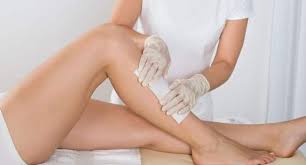The Waxing Artist Training Course is available for $599 +hst in St. Catharines.

Hair removal has been around for centuries. Ancient Rome used hot tar and razor-sharp shells as a hair removal method. Today, hair removal is a medical, cosmetic or psychological concern. Most clients have two motivations for hair removal: to feel feminine or for social norm (Basow, 2016).
Waxing is a popular hair removal method that involves applying a thin layer of wax to the skin and then quickly pulling it off, removing the hair from the root. This results in smooth skin that can last for several weeks. There are different types of waxing, including hot wax and strip wax, each with its own benefits. Waxing can be done on various parts of the body, such as the legs, arms, face, and bikini area. While waxing can be uncomfortable for some, many people find that the results are worth it for the long-lasting smoothness it provides.
Waxing 101
Waxing is an epilation hair removal method used on all parts of the body. Waxing involves the use of warm wax applied to the skin with a single-use disposable cloth. The strip is then rapidly pulled off away from the skin to remove the hairs.
Proper waxing technique leads to happy clients and more business. This Waxing Expert guide will go into detail on Health and Safety, Business Tips, Waxing Tool Kit, Skin Anatomy, Hair Anatomy, The Waxing Process, Practice Questions, Document Guides and Key terms. This 20-hour course will also involve shadowing a waxing expert, practical experience, a 50-question exam and a practical exam to receive the Waxing Expert Certificate.
History of the Beauty Industry
Hairlessness is a norm served in culture. Between 1915- 1945, there has been a dramatic change in women roles. In 1915 there were not many ads for hair removal or removal products. This is because the body was not visible because of clothing styles. Hair on places other than the head was considered unnecessary and ugly. In 1920, ads were focused on changing the human body. Mouthwash, deodorant, tooth products and sanitary napkins were new products. There was a vision of a tasteless, colorless, odorless, sweat less world. These ads may have been aimed at the waves of newly arrived immigrants from Eastern Europe, Italy, Ireland (early 1900s) (Basow, 2016).
1920s-1940s
1920s magazine ads emphasized on the importance of appearance for women in order to ensure her mates fidelity and home security in general – slender, youthful, sensual and sophisticated (Basow, 2016). Skirts were becoming shorter, there was an introduction to silk stocking and bathing suits became smaller. Leg shaving arises emphasis on sexual appeal, cleanliness and hygiene. Women wore stockings to avoid showing leg hair. The changing roles in women continued with the right to vote and women abandoned restrictive clothing. Women then joined the labor force, however in ads women were exclusively homemakers or narcissistic consumers.
1940s to Present
In 1940 – 1945 there was a shortage of silk stockings due to the war and sheer nylons were introduced. This Resulted in a bare legged style. Removing legs and underarm hair made women appear clean, neat, attractive and “modern”. Ads no longer needed to advertise removing hair and shifted towards capitalizing on which product was better. Women’s bathing suit increasingly reveal the pubic area. Women became encouraged to remove or bleach hair areas that show.
Please remember that if you ever have any questions or require additional training, do not hesitate to contact us. We want to make sure you are comfortable and confident in your skills, and that you are always eager to learn and improve.
Waxing Beauty Starter Kit $150
2 warmers, soft wax, hard wax, baby oil, baby powder, scissors, tweezers, strips, applicators, cleanser
Back to Courses | Learn more about Waxing

naeinc.ca | estheticiansinc@gmail.com | 289-968-2028
